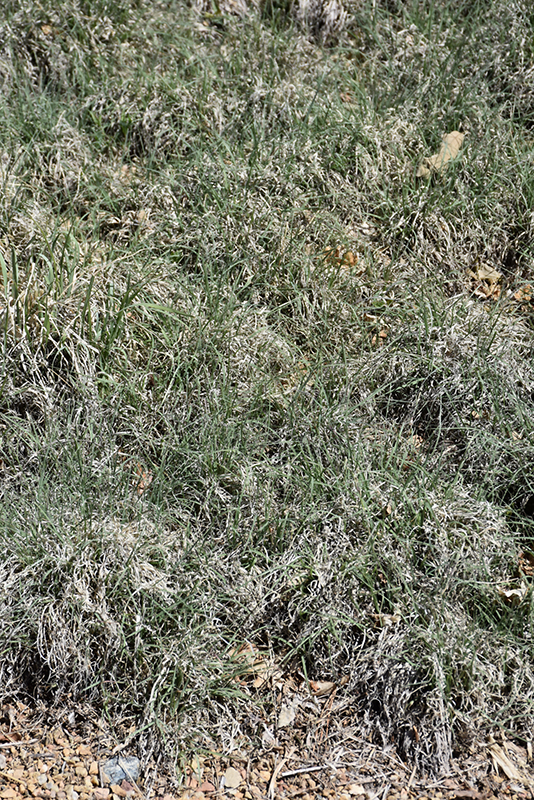Height: 6 inches
Spread: 12 inches
Sunlight:
![]()
Hardiness Zone: 3a
Other Names: Syn. Bouteloua dactyloides, Sesleria dactyloides
Description:
A low maintenance native turf grass producing somewhat inconspicuous flowers that give way to bur-like clusters on short stems; soft blue-green or gray-green foliage turns golden brown in fall; use as a lawn alternative in hot, humid, or dry areas
Ornamental Features
Buffalograss is primarily valued in the garden for its broadly spreading habit of growth. It attractive grassy leaves are bluish-green in color with hints of grayish green. As an added bonus, the foliage turns gorgeous shades of gold, brown and orange in the fall.
Landscape Attributes
Buffalograss is an herbaceous perennial grass with a ground-hugging habit of growth. It brings an extremely fine and delicate texture to the garden composition and should be used to full effect.
This is a relatively low maintenance plant, and is best cleaned up in early spring before it resumes active growth for the season. It is a good choice for attracting birds to your yard. It has no significant negative characteristics.
Buffalograss is recommended for the following landscape applications;
- Mass Planting
- General Garden Use
- Groundcover
- Naturalizing And Woodland Gardens
Planting & Growing
Buffalograss will grow to be only 6 inches tall at maturity, with a spread of 12 inches. It grows at a fast rate, and under ideal conditions can be expected to live for approximately 5 years. As an herbaceous perennial, this plant will usually die back to the crown each winter, and will regrow from the base each spring. Be careful not to disturb the crown in late winter when it may not be readily seen!
This plant should only be grown in full sunlight. It prefers to grow in average to dry locations, and dislikes excessive moisture. It is considered to be drought-tolerant, and thus makes an ideal choice for a low-water garden or xeriscape application. It is not particular as to soil pH, but grows best in poor soils. It is highly tolerant of urban pollution and will even thrive in inner city environments. This species is native to parts of our region.
